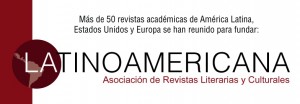Six Japanese characters speaking in Latin. Dialogue and cultural translation in Duarte de Sande’s De missione legatorum iaponensium ad Romanam curiam
Abstract
This paper focuses on the first Japanese Embassy to Europe and its literary version De missione legatorum iaponensium ad Romanam curiam (Macau, 1590), attributed to the Portuguese Jesuit Duarte de Sande. This text is considered as an interesting early modern source for studying the linguistic and cultural passages between Europe and Japan. In this dialogue, the main characters are the four ambassadors and two other Japanese who have not traveled outside Japan. The latter ask the former about their journey, and the European manners and habits. As a result, the De missione legatorum... becomes a didactic dialogue about Europe for Japanese readers. This paper first discusses the dialogue as a genre, and the peculiarities of this Jesuit enterprise. Then, the paper deepens in the ambassador’s voices (Christian and Japanese at once), and the way they build a certain “rhetoric of Otherness” (Hartog, 1991) for his countrymen. Their peculiar points of view allow them to find the strangeness not only in Europe, but also in their homeland, Japan. Then, they can read the world in a relativistic way, as Michel de Montaigne has done (1590). Finally, the comparision with Fróis’ Tratado would shed new light onto the way in which the dialogue built a relativistic perspective.
References
Bruni, Leonardo (1996). “Dialogi ad Petrum Paulum Histrum”. Opere letterarie e politiche di Leonardo Bruni. Viti, Paolo ed. Turín: Unione tipografico-editrice Torinese, pp. 73-143.
Castiglione, Baldassare (1945 [1528]). El Cortesano. Buenos Aires: Espasa Calpe.
Fróis, Luís. (2003). Tratado sobre las contradicciones y diferencias de costumbres entre los europeos y japoneses (1585). Ricardo de la Fuente Ballesteros ed. y trad. Salamanca: Universidad de Salamanca.
Montaigne, Michel de (1984 [1580]). Ensayos completos. Tomo I. Buenos Aires: Orbis.
Sande, Duarte de (2012). Japanese Travelers in sixteenth-century Europe. A Dialogue concerning the Mission of the Japanese Ambassadors to the Roman Curiam (1590). Massarella, Derek (ed.) y Joseph Moran (trad.). Londres: Hakluyt Society.
----- (2009a [1590]). Américo da Costa Ramalho (trad. y ed.). Missão dos Embaixadores Japoneses. Tomo I (colóquios I-XVIII). Coimbra: Imprensa da Universidade de Coimbra.
----- (2009b [1590]). Américo da Costa Ramalho (trad. y ed.). Missão dos Embaixadores Japoneses. Tomo II (colóquios XIX- XXXIV). Coimbra: Imprensa da Universidade de Coimbra.
Valignano, Alessandro (1954). Sumario de las cosas de Japón. José L. Álvarez-Taladriz ed. Tokio: Sophia Daigaku.
Bibliografía secundaria
Arimura, Rie (2011). “Las misiones católicas en Japón (1549-1639): análisis de las fuentes y tendencias historiográficas”. Anales del Instituto de investigaciones estéticas, vol. XXXIII, 98, pp. 55-106.
Ballesteros, Ricardo de la Fuente (2003). “Presentación”. Tratado sobre las contradicciones y diferencias de costumbres entre los europeos y japoneses (1585). Salamanca: Ediciones Universidad de Salamanca, pp. 9-26.
Boxer, Charles (1951). The Christianity in Japan: 1549-1639. Berkeley: University of California Press.
Burke, Peter (2010). “Culturas de la traducción en la Europa moderna”. La traducción cultural en la Europa Moderna. Peter Burke y Ronnie Po-Chia Hsia eds. Madrid: Akal, pp. 11-44.
Brown, Judith (1994). “Courtiers and Christians: The First Japanese Emissaries to Europe”. Renaissance Quarterly, 47/1, pp. 872-906.
Costa Ramalho, Américo (2009). “Prefácio”. Missão dos Embaixadores Japoneses. Tomo I. Coimbra: Imprensa da Universidade de Coimbra, pp. 5-19.
Elias, Norbert (2012 [1933]). La sociedad cortesana. México: Fondo de Cultura Económica.
Elison, George (1973). Deus Destroyed. The Image of Christianity in Early Modern Japan. Cambridge: Harvard University Press.
Fernandes Pinto, Ana (2004). Uma imagem do Japão. A aristocracia guerreira nipónica nas cartas jesuítas de Évora (1598). Macau: Fundação Oriente & Instituto Português do Oriente.
Gómez, Jesús (2000). El diálogo renacentista. Madrid: Laberinto.
Gruzinski, Serge (2010). Las cuatro partes del mundo. Historia de una mundialización. México: Fondo de Cultura Económica.
Hartog, François (2003). El espejo de Heródoto. Ensayo sobre la representación del otro. México: Fondo de Cultura Económica.
Higashibaba, Ikuo (2001). Christianity in Early Modern Japan. Kirishitan Belief and Practice. Boston: Brill.
Hosne, Ana (2013). The Jesuit Missions to China and Peru, 1570-1610. London y New York: Routledge.
Igawa, Kenji (2017). Sekaishi no naka no Tenshou ken’ou Shisetsu. Tokio: Yoshikawa Kobunkan. Kwiatkowski, Nicolás (2020). Fuimos muy peores en vicios. Barbarie propia y ajena, entre la caída de Constantinopla y la Ilustración. Buenos Aires: Eudeba.
Knauth, Lothar (1972). Confrontación transpacífica. El Japón y el nuevo mundo hispánico 1542-1639. México: Universidad Nacional Autónoma de México.
López-Vera, Jonathan (2021). Toyotomi Hideyoshi y los europeos. Portugueses y castellanos en el Japón samurái. Barcelona: Universitat de Barcelona Edicions.
Loureiro, Rui Manuel (1994). “A visão do outro nos escritos de Luís Fróis SJ”. O século cristão do Japão. Roberto Carneiro y Teodoro Matos (dirs.). Lisboa: Universidade Católica Portuguesa y Universidade Nova de Lisboa, pp. 645-663.
Marsh, David (2008). “Dialogue and Discussion in the Renaissance”. The Cambridge History of Literary Criticism (vol.3): The Renaissance. Glyn P. Norton ed. Cambridge: Cambridge University Press, pp. 265-70.
Martínez, Carolina (2020). “Libros de viajes, libros de trajes. Singularidad y tipificación del repertorio iconográfico americano en el siglo XVI”. Prohistoria, 34, pp. 7-39. Massarella, Derek (2005). “Envoys and Illusions: the Japanese Embassy to Europe, 1582-90, De Missione Legatorum Iaponensium, and the Portuguese Viceregal Embassy to Toyotomi Hideyoshi, 1591”. JRAS Series 3, 15/3, pp.329-350.
----- (2012). “Introduction”. Japanese Travelers in sixteenth-century Europe. A Dialogue concerning the Mission of the Japanese Ambassadors to the Roman Curiam (1590). Londres: Hakluyt Society, pp. 1-31.
Moran, J.F. (1993). The Japanese and the Jesuits. Alessandro Valignano in Sixteenth- Century Japan. Londres y Nueva York: Routledge.
Nogueira Ramos, Martin (2019). La foi des ancêtres. Chrétiens chacés et catholiques dans la société villageoise japonaise. París: CNRS Editions.
Oliveira e Costa, João Paulo (1999). O Japão e o cristianismo no século XVI. Lisboa: Sociedade Histórica da Independência de Portugal.
Pelliccia, Carlo (2018). “Japan Meets the West: New Documents about the First Japanese Embassy to Italy (1585)”. Annals of Dimitrie Cantemir Christian University, vol. XVII, N°1, pp. 104-123.
Reff, Daniel T. (2014). “Critical Introduction. The Tratado, the Jesuits and the governance of souls”. The First European Description of Japan, 1585. A critical English- language edition of Striking Contrasts in the Customs of Europe and Japan by Luis Frois, S.J. Richard K. Danford, Robin D. Gill, y Daniel T. Reff (eds.). Oxon y New York: Routledge, pp. 1-30.
Ross, Andrew (1994). A Vision Betrayed. The Jesuits in Japan and China 1542-1742. New York: Orbis Books.
Rubiés, Joan-Pau (2012). “¿Diálogo religioso, mediación cultural o cálculo maquiavélico? Una nueva mirada al método jesuita en Oriente, 1580-1640”. Jesuitas e imperios de ultramar. Siglos XVI-XX. A. Coello de la Rosa, J. Burrieza Sánchez y D. Moreno coords. Madrid: Sílex, pp. 35-63.
----- (2005). “The Concept of Cultural Dialogue and the Jesuit Method of Accomodation: Between Idolatry and Civilization”, AHSI, vol. LXXIV, fac. 147, pp. 237-280.
Samson, George (1990 [1961]). A History of Japan 1334-1615. Vermont y Tokio: Tuttle. Seabra, Leonor Diaz de y Maria de Deus Manso (2012). “Ensino e Missão Jesuíta no Oriente”. Cultura e Sociabilidades no Mundo Atlântico. S. Almeida, M. Ribeiro
y G. Silva coords. Recife: Editora Universitária UFRPE, pp. 83 -130 Tieffemberg, Silvia (2014). “Lugares de enunciación inestables”. Telar 11-12, pp. 269-283. White, Richard (2011). The Middle Ground. New York: Cambridge University Press.
La aceptación de colaboraciones por parte de la revista implica la cesión no exclusiva de los derechos patrimoniales de los autores a favor del editor, quien permite la reutilización, luego de su edición en papel (postprint), bajo licencia Creative Commons Atribución-NoComercial-CompartirIgual 3.0
La cesión de derechos no exclusivos implica también la autorización por parte de los autores para que el trabajo sea alojado en el repositorio institucional de la UNT y difundido a través de las bases de datos que el editor considere apropiadas para su indización, con miras a incrementar la visibilidad de la revista y sus autores.























